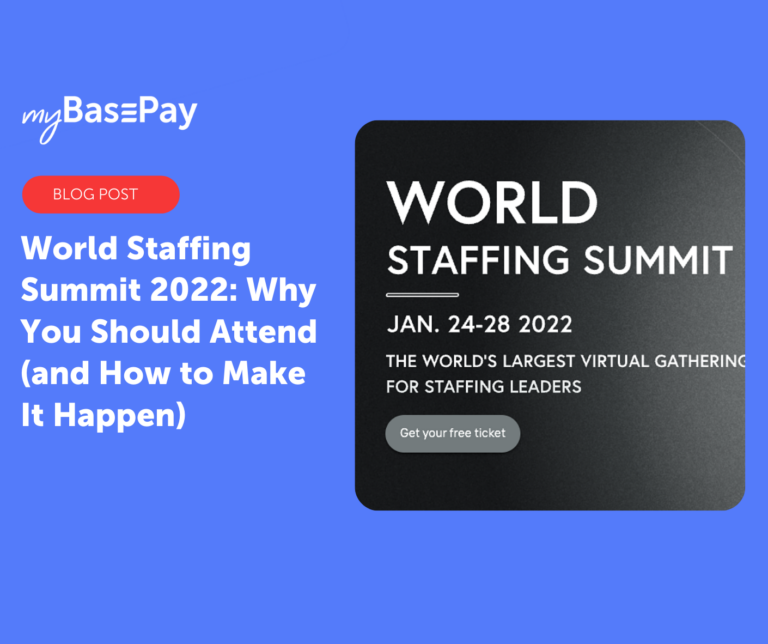3 Modern-Day Talent Acquisition (and 3 Retention) Strategies for Today’s Ultra-Competitive Market
To say that today’s hiring environment is more challenging than ever feels like an understatement. Throughout 2021, there have been more unfilled job openings than unemployed individuals.
While the job openings are there, many workers aren’t interested in applying. At the same time, many have resigned from the jobs they already had. The high turnover rates that began due to the COVID-19 pandemic, the increased prevalence of remote work, and concerns over fair pay are just a few factors that have caused many businesses to struggle to fill open positions.
Of course, talent acquisition is only one part of the challenge. It isn’t enough to onboard top talent. You must also take actionable steps to improve retention, especially in industries where competitors have no qualms about luring away your top performers.
Acquisition Strategy #1: Diversify Your Talent Sources
Many companies continue to rely on the same recruitment strategies they have always used. They go to the same colleges, the same job fairs, and so on.
Diversity, equity, and inclusion (DE&I) are increasingly important to modern employees. While this may have worked in the past, today’s workforce is more diverse than ever before — and your talent sources should match. , Various talent boards, Historically Black Colleges and Universities (HBCUs), and professional organizations for women and minorities are just a few resources that should become part of your talent acquisition strategy.
Broadening your talent sources will provide access to more talented candidates and ultimately make your business more competitive.
Acquisition Strategy #2: Close Communication Gaps With Automation
In an interview with the Ivy Podcast, Keith Wolf, Managing Director of Murray resources, noted that communication gaps often create unintended roadblocks in the talent acquisition process:
“In terms of getting back to candidates, whether it’s web chatting or whether it’s automatically reaching out to them, just giving them an explanation of why they didn’t get selected for a role […] there’s just a lot of communication breakdown between the candidates and the recruiters and the clients. […] And that’s why there’s so much frustration because it is so easy to apply. It is so easy not to get back to people because you’re flooded with resumes. I think closing that loop and using automation is just a great way to sort of bridge that gap.”
This can be even more important when reaching out to individuals you wish to hire. When top talent is interested in working for your company, they don’t want to be left hanging. Automated communication tools can ensure that no candidate slips through the cracks and that they receive timely updates to know where they stand.
Acquisition Strategy #3: Be Willing to Adapt to Changing Hiring Processes
The COVID-19 pandemic has forever altered workforces. Businesses are increasingly working with geographically dispersed teams, with a mix of remote workers, freelancers, and in-office employees.
This flexible office structure is highly desirable to many. A 2020 survey from Owl Labs found that 59 percent of workers stated they would be more likely to choose employers who offered remote work. Twenty-three percent were even willing to take a 10 percent pay cut for permanent employment from home status.
Companies must be willing to provide greater flexibility to their workforce — and this begins in the hiring process. The ability to conduct interviews via Zoom, rather than to require in-office meetings, can go a long way in appealing to top talent.
Retention Strategy #1: Provide Opportunities for Career Growth
In his Ivy Podcast interview, Keith Wolf explained, “This generation of workers, they crave feedback. They want to know how they’re doing. They want to know what their career is going to look like. They want to know how it’s going to progress. […] Really, what they want to know is if there’s a plan for them and how their career is going to grow.”
Part of the reason behind recent retention issues is employees who feel like they don’t have many opportunities for growth in their current company. They view changing companies as the quickest path to a promotion or pay raise.
Research from the Harvard Business Review found that 94 percent of employees will stay longer if the employer invests in their career. Providing meaningful growth opportunities, mentorship and training is an essential baseline for retention.
Retention Strategy #2: Prioritize Work-Life Balance
Work-life balance became increasingly important to employees in the wake of the COVID-19 pandemic. When work hours go beyond the standard nine to five, it can have severe consequences for the employee and the business.
Shockingly, 51 percent of people report that work has caused them to miss important life events, while 50 percent say they’ve had less time with family and friends. Poor work-life balance has been found to increase rates of anxiety and depression and lower morale and productivity.
Ultimately, a few aspects of company culture will be more important than prioritizing work-life balance. Respecting employee boundaries to take vacations and enjoy their weekends will leave them more energized and engaged in their work.
Retention Strategy #3: Become an Expert Communicator
A good salary and benefits are certainly attractive for onboarding talent. But if you want to keep that top talent, you need to enhance your communication skills. Employees want to feel valued at work, and consistent communication from leadership can be critical in this.
Quality communicators take the time to listen to their employees. They provide encouragement and praise, as well as a correction when needed. The consistent effort helps build a relationship of trust — one where an employee isn’t afraid to let you know if something needs to change or if they’ve received another competitive offer.
An open, collaborative culture ensures you get the best from your team. One long-term study found that these appreciative, performance-enhancing cultures saw revenue growth of 682 percent, far outpacing other firms.
Working with a talented hiring firm can go a long way in helping you attract and retain qualified candidates for your business. But much of the groundwork for successful hiring and retention begins from within. As you implement these strategies to create a more attractive work environment for top talent, you will be better positioned to stand out in a competitive job market.
Author: Cesar Romero
Cesar is the Head of Marketing at myBasePay, where he’s responsible for overseeing the company’s content marketing, community, and partnerships strategy. He also co-hosts The Ivy Podcast where he interviews executives from Fortune 500 companies on executive leadership. When he’s not helping startups with marketing and community strategy, you can find him paying it forward by serving as a mentor for leading organizations like StartingBloc, Hive, and Global Citizen Year.






